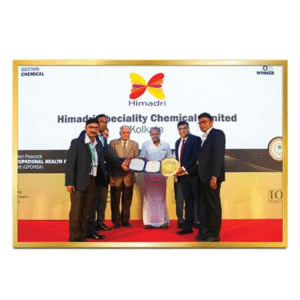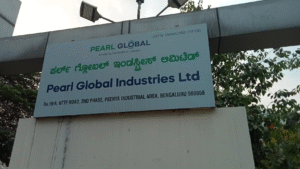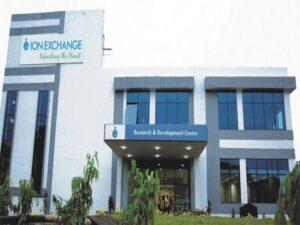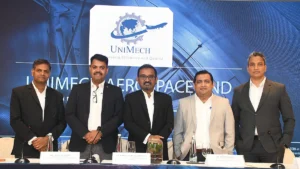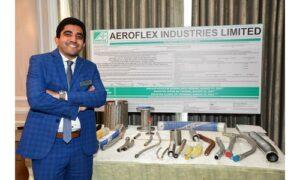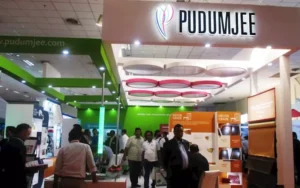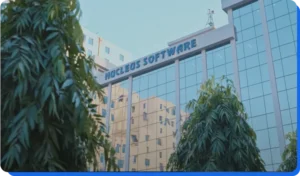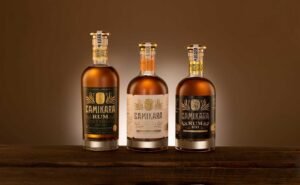1. At a Glance
Supreme Industries isn’t just India’s plastics king—it’s the monarch, emperor, and overenthusiastic uncle of every family function who insists on bringing plastic chairs. With ₹10,419 Cr in sales and ₹890 Cr in profit (FY25), it sells everything from pipes to pallets, furniture to fancy LPG cylinders. At a P/E of 64, the market clearly believes plastic is the new gold—except gold doesn’t get dented when your drunk cousin falls on it.
2. Introduction
Walk into any Indian house and you’ll find a Supreme product lurking somewhere: pipes under the bathroom tiles, chairs in the garden, or that mysterious storage bin your mother insists has “important things” but is actually full of old wedding cards. Supreme has managed to plasticize Indian infrastructure and domestic life with the subtlety of a sledgehammer.
But it isn’t just India. With 30 plants, 14,000 SKUs, and a distribution mafia of 6,000+ dealers, Supreme sells more plastic than Instagram sells dopamine hits. From PVC pipes to cross-laminated films, from fancy composite cylinders to chairs you probably sat on at a wedding, Supreme covers every corner.
The problem? Demand hasn’t kept pace with ambition. Volumes in FY25 slumped across categories, margins slipped, and PAT fell 21%. Yet the market still pays 64 times earnings—because apparently, investors believe plastic has more staying power than their gym memberships.
3. Business Model (WTF Do They Even Do?)
Supreme’s business model is simple: make everything out of plastic that can possibly be made out of plastic, and then some.
- Plastic Pipes (67% of sales): 14,000 SKUs of uPVC, HDPE, CPVC, fittings, tanks—you name it, they’ve piped it. The backbone of India’s plumbing and infrastructure.
- Packaging (16%): Films, protective foams, cross-laminated materials. Good margins, decent growth, basically bubble wrap on steroids.
- Industrial (13%): Moulded components, pallets, LPG cylinders, Bubble Guard boards. The “weird cousin” of the portfolio, but quietly scaling.
- Consumer & Others (4%): Chairs, stools, tables, beds. This is the “shaadi furniture” division—great for volume visibility, bad for aspirational branding.
Revenue mix screams “plumbing giant with side hustles.” Margins hover around 13%, which is fine for industrial plastic but not fine enough to justify luxury
valuations.
4. Financials Overview
Quarterly Snapshot (Q1 FY26 vs Q1 FY25 & Q4 FY25):
| Metric | Latest Qtr (Jun’25) | YoY Qtr (Jun’24) | Prev Qtr (Mar’25) | YoY % | QoQ % |
|---|---|---|---|---|---|
| Revenue (₹ Cr) | 2,609 | 2,636 | 3,027 | -1.0% | -13.8% |
| EBITDA (₹ Cr) | 319 | 387 | 416 | -17.6% | -23.3% |
| PAT (₹ Cr) | 202 | 273 | 294 | -26.0% | -31.3% |
| EPS (₹) | 15.9 | 21.5 | 23.1 | -26.0% | -31.1% |
Commentary:YoY and QoQ both look like a plastic chair leg under a heavyweight—cracked. EPS annualized ~₹64, versus CMP ₹4,496 → recalculated P/E ~70. Market isn’t valuing this like a pipe company—it’s valuing it like it’s Apple.
5. Valuation (Fair Value RANGE only)
Method 1: P/E Multiple
- EPS (TTM) = ₹70
- Apply reasonable sector P/E band 25–35 → FV = ₹1,750 – ₹2,450
Method 2: EV/EBITDA
- EV = ₹56,228 Cr
- EBITDA (TTM) = ₹1,363 Cr
- EV/EBITDA = 41 (ouch).
- Fair multiple 18–22 → FV = ₹2,200 – ₹2,700
Method 3: DCF (Simplified)
- CFO ~₹1,000 Cr avg, growth 10%, discount 12% → FV = ₹2,400 – ₹2,800
👉Fair Value Range (Educational Only):₹1,750 – ₹2,800CMP ₹4,496 is well above—clearly investors like expensive plastic.
6. What’s Cooking – News, Triggers, Drama
- Acquisition: Snapped up Orbia Wavin’s India pipes biz for $30M → 33 plants now.
- Capex: ₹1,500 Cr plan, ₹718 Cr already spent. New plants in Jammu, Bihar, MP. Expansion mode = still
